*My posts may contain affiliate links, which means I may receive a small commission, at no cost to you, if you make a purchase through a link! Thank you for supporting my website!*
Last updated on February 28th, 2024 at 04:30 pm
Have you ever wondered if you’re supposed to sand the final coat of polyurethane? The polyurethane can says to sand between coats, but it’s a little confusing as to whether that includes the final coat or not.
So I ran an experiment to determine how the final coat turns out if you sand it (or if you don’t). Here is what I found out:
Sanding the final coat of polyurethane leaves a scratched, rough finish to the polyurethane. To achieve a smooth finish, only sand between coats of polyurethane using very fine sandpaper, and leave the final coat unsanded.
To see for yourself how the finishes turned out, see the pictures of the experiment below.
Let’s dive in!
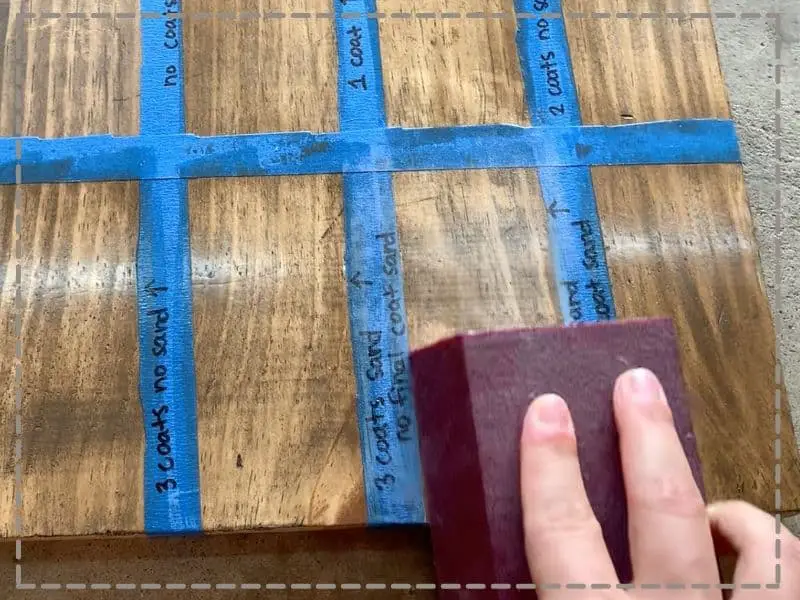
Quick Navigation: Sanding The Final Coat Of Polyurethane
- What Happens If You Sand The Final Coat Of Polyurethane
- The Final Results: Do You Sand The Final Coat Of Polyurethane?
- Other FAQs About Sanding Polyurethane
- Final Thoughts
What Happens If You Sand The Final Coat Of Polyurethane
To find out what happens if you sand the final coat of polyurethane, I stained a piece of pinewood and applied 3 coats of semi-glossy oil-based polyurethane (and sanded with 220 grit sandpaper between each layer).
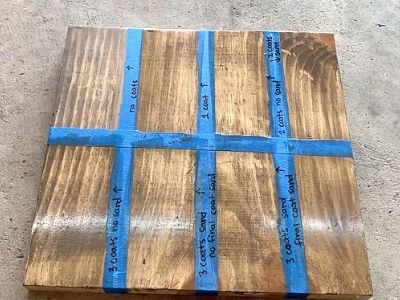
Then for one section of the wood, I sanded the final coat, and the other section I left unsanded. Here are the results:
| Type | Finish | Durability |
|---|---|---|
| Final Coat Unsanded | Smooth, Semi-Glossy | Hard To Scratch* |
| Final Coat Sanded | Scratched, Rough | Easy To Scratch* |
Finish
The polyurethane finish was the most notable part of this experiment.
Without the final coat sanded, the polyurethane was smooth and had a nice glossy sheen to it like you’d expect a semi-gloss finish to have.
On the other hand, with the final coat sanded, it sanded through part of the topcoat. That left a scratched, uneven, rough surface.
Not ideal for the final coat of a wood project where you’re expecting a nice and smooth finish.
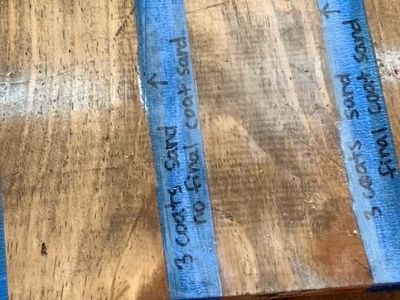
Durability
The other notable part of the experiment was the durability of the polyurethane. Since the sanded final coat ate into a part of the final coat, it took away from the durability of the polyurethane.
I was able to scratch the wood surface with my fingernail because it didn’t have the solid final coat anymore.
For the unsanded final coat, however, I couldn’t scratch the wood with my fingernail because it was doing its job and fully protecting the wood.
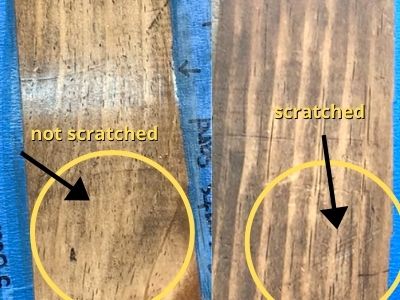
The Final Results: Do You Sand The Final Coat Of Polyurethane?
After completing this experiment, I can definitively say that you should not sand the final coat of polyurethane.
You will have a much smoother, clean finish to the topcoat of your wood project if you only sand between coats of polyurethane and skip sanding the final coat.
This result is super positive because now you don’t have to waste your time sanding the final coat! Just sand between the coats if necessary, then apply your final coat, and you’re all done!
Other FAQs About Sanding Polyurethane
Here are some other frequently asked questions about sanding polyurethane to help you achieve a perfect polyurethane finish!
Should You Sand Between Coats Of Polyurethane?
Sanding between coats of polyurethane is beneficial and aids in an extra smooth finish. Sanding between coats is required if there are drip marks, prominent brush strokes, or any other unevenness in each coat. Otherwise, sanding between coats is optional.
What Happens If You Don’t Sand Between Coats Of Polyurethane?
To be honest, I’m kinda lazy, and it seems like a lot of extra work to sand between coats of polyurethane.
So I was curious about what would happen if I didn’t sand between coats. I was surprised with the difference between the finish of a piece of wood that was sanded and a piece that had no sanding between layers of polyurethane.
You can read my article to see the results for yourself.
Final Thoughts On Sanding The Final Coat Of Polyurethane
There you have it! Save yourself some time and skip the sanding on the final coat of polyurethane.
Knowing these little “best practices” of applying stain and polyurethane will level up your woodworking skills and help you create fantastic projects!
Catch you in my next post!
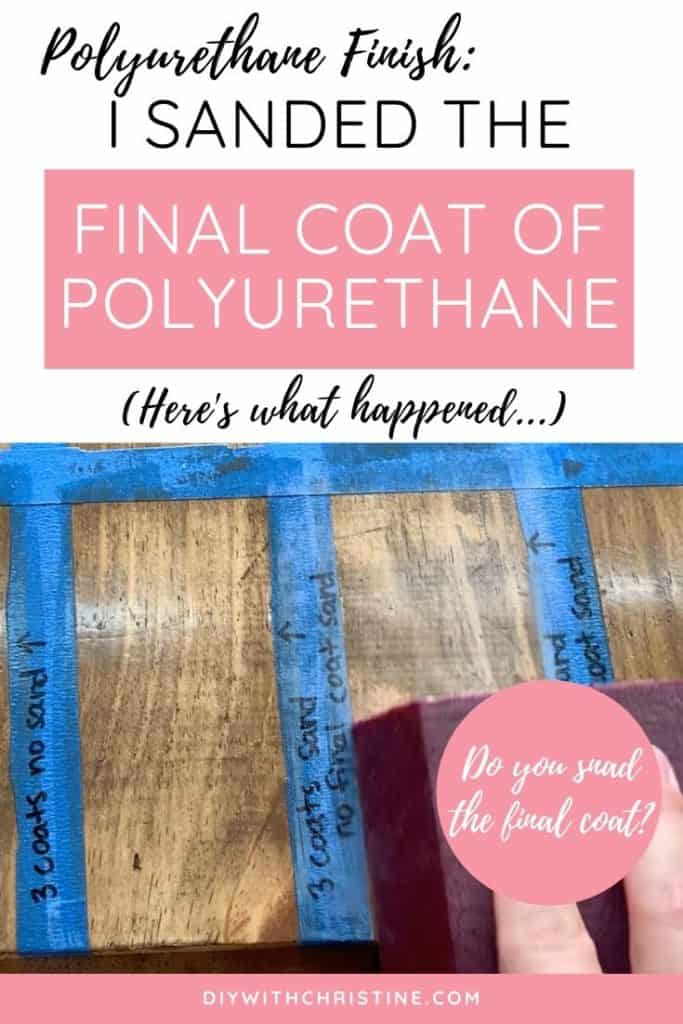

By Christine
Christine is a blogger and DIYer who tackles home renovation and decorating projects alongside her husband, Adam, for their personal residence and rental properties. Although she successfully tackles large renovation projects to avoid expensive contractor fees and bring her vision to life now, her path to success was not easy.
Go here to read her story, “From a Clueless First-Time Homebuyer To A Confident DIYer Creating Her Dream Home One Project At A Time“.
Popular Posts
DIY With Christine is a participant in the Amazon Services LLC Associates Program, an affiliate advertising program designed to provide a means for sites to earn advertising fees by advertising and linking to Amazon.com.





